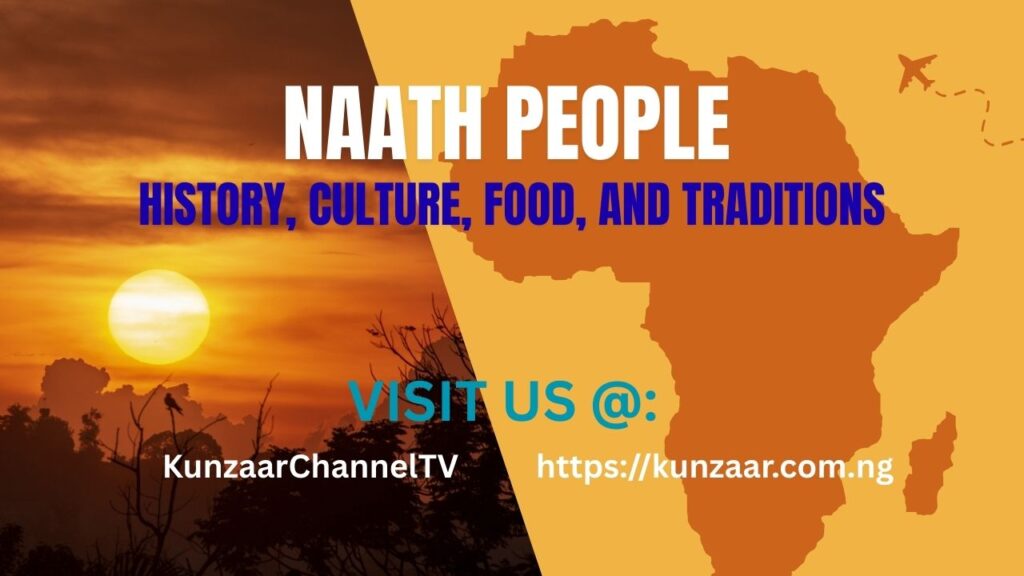Introduction
The Naath people, widely known as the Nuer, are one of the largest ethnic groups in South Sudan and parts of western Ethiopia. Known for their strong pastoralist culture, rich oral traditions, and fierce independence, the Naath have played significant roles in the socio-political history of the region. In this post, we will explore Naath people history, origin, culture, religion, food, festivals, marriage customs, and geographic presence.
History of the Naath People
The Naath trace their history to the migration of Nilotic-speaking peoples from the Nile Valley region. Historically, they are closely related to the Dinka and Anyuak peoples. Oral tradition suggests the Naath were once part of a larger Nilotic group before splitting due to internal disagreements and environmental pressures such as floods and conflicts.
Also Read: The History Of Fulani Tribe
During the colonial era, the British encountered the Naath and attempted indirect rule through tribal chiefs, although the Naath traditionally followed more democratic clan-based systems. Their resistance to colonialism and strong warrior culture earned them a fierce reputation. This tribe is known for their bravery and resilient.
Origin and Ethnic Identity
The term “Naath” means “the people” in their own language. While outsiders often refer to them as the “Nuer”, they self-identify as Naath. Their language is part of the Nilo-Saharan language family and is known as Thok Naath.
The Naath people are organized into various clans and lineages, such as the Leek, Bul, Jikany, Lou, and Gawaar, among others. These clans are tied together by lineage, territory, and shared customs.
Food and Traditional Diet
Many foods are known for a particular tribe which the Naath tribe are not an exception. The Naath people have a predominantly pastoralist economy, and their diet reflects this:
- Milk is a staple food, often drunk fresh or fermented.
- Meat (especially beef and goat) is consumed during ceremonies or special events.
- Sorghum and millet are used to prepare porridge or flatbreads.
- Fish is consumed, especially among riverine communities.
- Wild fruits and greens supplement their diet during dry seasons.
Food plays a ceremonial role during weddings, births, and funerals, often shared communally.
Religion and Spiritual Beliefs
Traditionally, the Naath practiced African Traditional Religion, believing in a supreme deity called “Kuoth” who controls the universe and nature. They also believe in ancestral spirits and maintain spiritual leaders known as “prophets” (or Guan), who mediate between the people and the divine.
Today, many Naath people have adopted Christianity, especially following missionary efforts in the 20th century. However, traditional beliefs often remain intertwined with Christian practices, especially in rural areas.
Festivals and Ceremonies
The Naath observe several traditional festivals and life-cycle ceremonies:
Initiation Ceremonies: Young boys undergo facial marking (garification) and pass into adulthood through initiation.
Weddings: Celebrated with dance, music, and animal sacrifices.
Cattle Blessings: Involves prayers and rituals invoking Kuoth for fertility and protection.
Funeral Rites: Include drumming, wailing, and communal feasting.
Their music and dance involve rhythmic drumming and group performances during social and spiritual gatherings.
Cultural Practices and Identity
The Naath culture is deeply rooted in cattle herding, which influences their:
Social status: Some measured their wealth through landed properties they have acquired while Naath tribe case is different. Wealth in Naath tribe is measured in cattle. How many herds you have?
Bride price: Paid in cattle during marriage.
Spiritual connection: Cattle are seen as sacred and symbolic.
Naming of children: Often based on cattle characteristics or circumstances of birth.
The garification (forehead scarification) is a cultural identifier for initiated men, though it’s declining among the younger generation.
Geographic Distribution
The Naath people can primarily be found in these countries as identified below:
South Sudan: In states like Upper Nile, Unity, and Jonglei.
Ethiopia: In the Gambella Region, especially along the Baro River.
You Can Also Read: Step-by-Step With Highest Common Factor
Their territory is characterized by vast grasslands, rivers, and seasonal floodplains, suitable for cattle grazing.
Marriage Customs
Marriage among the Naath is both a cultural and economic institution:
Bride price: Paid in cattle by the groom’s family.
Polygamy: Common and socially accepted.
Family involvement: Marriages are arranged with deep consultation among clans.
Ceremonies: Include singing, dancing, and the slaughter of cattle.
Women’s roles: Wives are respected as bearers of lineage and household managers.
Marriage is seen as a way to build alliances between clans.
Conclusion
The Naath people are a proud, resilient, and culturally rich group with deep historical roots and traditions that continue to influence their identity today. Despite modern changes, their connection to cattle, community, and spirituality remains at the heart of their way of life.

